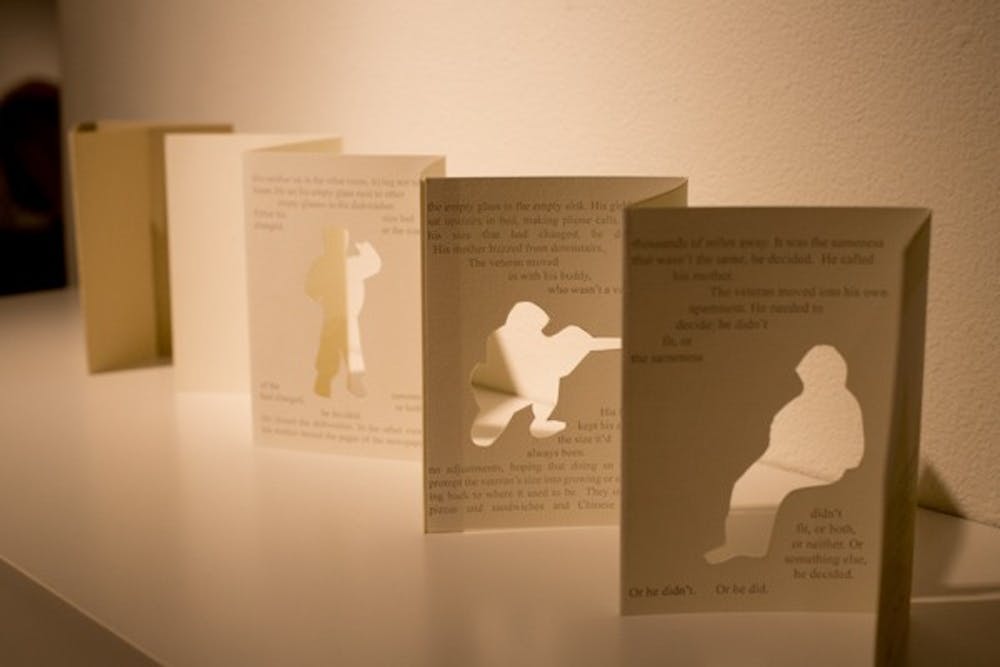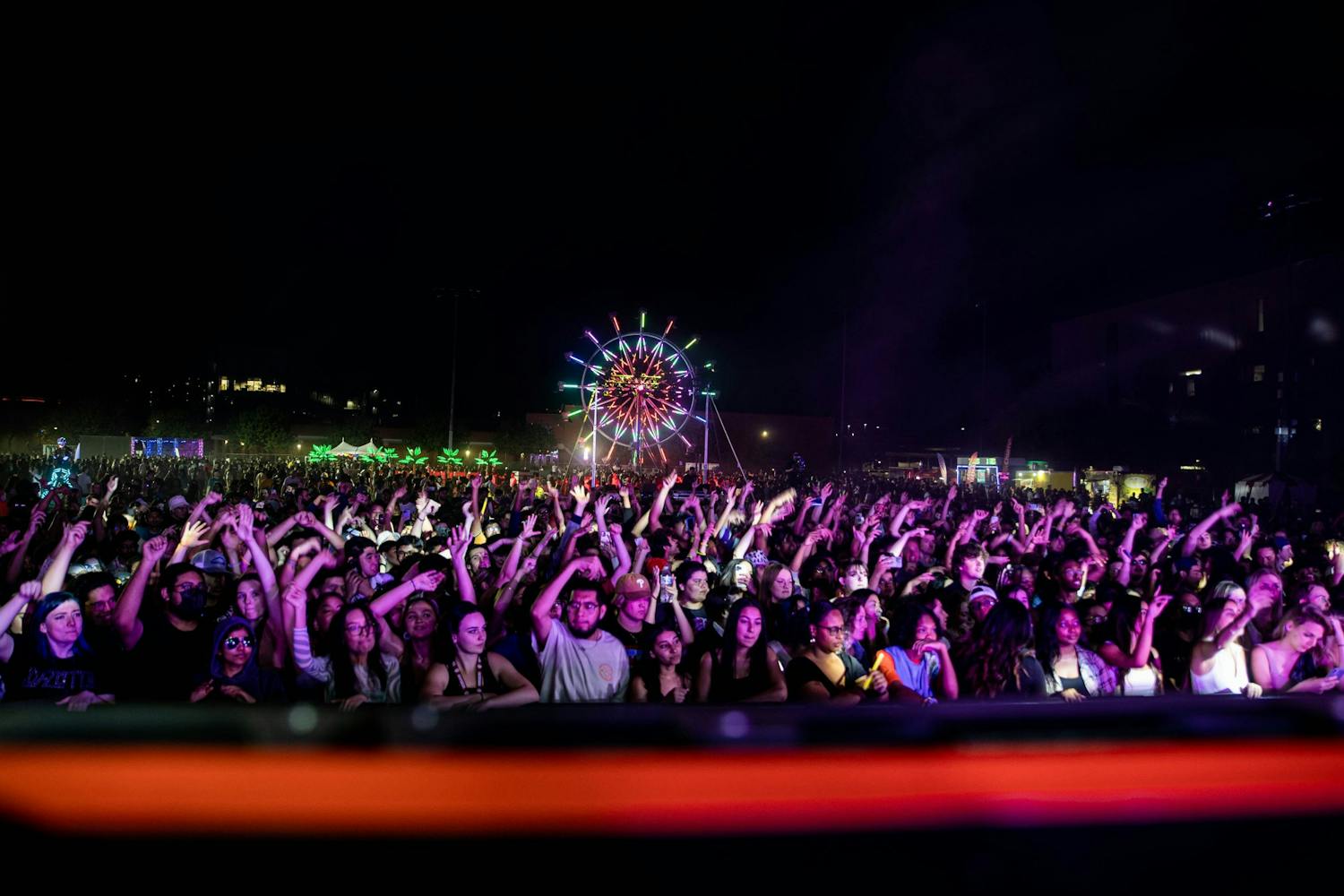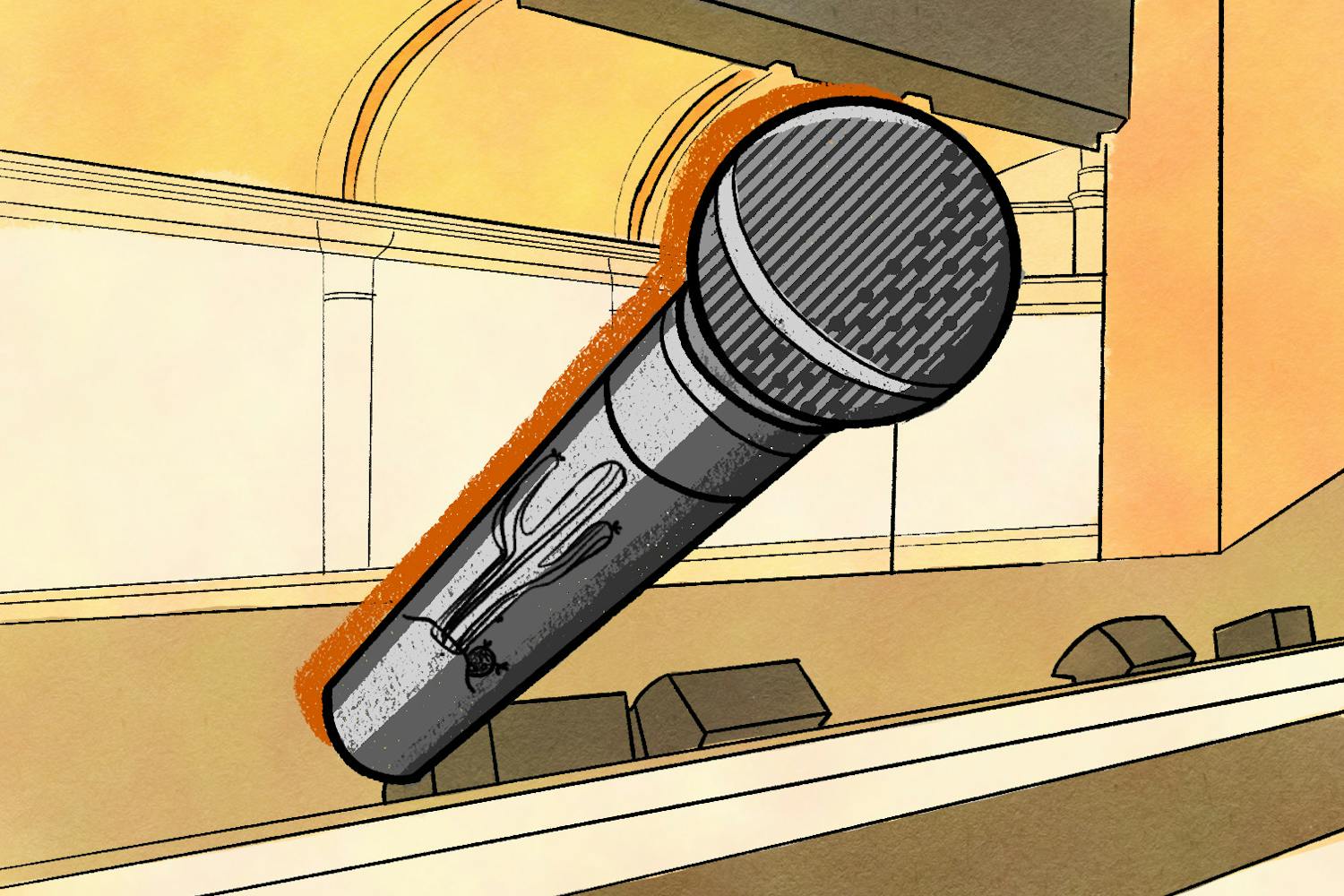You will not find a “Please Don’t Touch” sign posted anywhere at "Strat-o-graphic," the 14th annual exhibition put on by A-Buncha-Book-Artists of handmade and commercially printed books made by students and local artists. In fact, the exhibit practically demands that the casual exhibit-goer embrace his or her sense of touch when wandering among the dozens of meticulously crafted books on display in the Harry Wood Gallery at the Tempe campus.
Books are not meant to be cordoned off behind plate-glass; they are meant to be held. Only in the hands of the observer does the artistry of the printmaking process truly come alive.
“It’s not like a painting you can hang on the wall; it is something you need to spend more time with and flip through,” Kate Horvat, graduate printmaking and president of ABBA, said.
In our daily life, the ephemerality of the written word (here’s looking at you, Kindle, iMessage, etc.) leaves your reporter starved for a certain sense of physicality that simply isn’t satisfied by the tracing of your fingers along a glass screen. There’s just something inherently magical when you hold a book in your hands and run your fingers over the printed word on a page.
Thankfully, "Strat-o-graphic" presents a firm rebuttal to my cynical view that the future of textuality rests firmly behind the luminescent glass of an iPhone. Three minutes in the Harry Wood Gallery will prove that there is thriving world of artists hell-bent on keeping the tradition of physical books alive.
Let’s take a brief — and by no means comprehensive — tour of some of the books on display, shall we?
Your reporter was immediately struck by a bright pink book opened to a photograph of a shirtless man covered in bright red kiss marks on one end of the long, black table that runs through the center of the gallery. The book by third year photography MFA student Clarita Lulic practically flew into my hands. I flipped through the small saddle-stitched book, which features various photographs of Lulic’s husband eating a potato, covered in paint, doused in flour, etc.
These photographs were a kind of test for her husband, Lulic said.
 A book of photos created by ASU student Clarita Lulic, an MFA student in the photography program. (Photo by Carly Traxler)
A book of photos created by ASU student Clarita Lulic, an MFA student in the photography program. (Photo by Carly Traxler)“I was interested to see how much he would go through for my work, so it’s the relationship between photographer and sitter and how much power I have over him, because I see a relationship as kind of a battle for power,” she said.
The photographs were printed on a color Xerox printer, and the pink cover was fashioned of double-sided inkjet paper. These lower cost printing options are an important aspect of Lulic’s vision, as they allow for her work to reach a wider audience, she said.
Moving along this black table at the center of the gallery, you will stumble upon “Damnatio Memoriae” by art graduate student Adam Antonio Montoya. Six thick cardstock cards (with included envelope) depict variations of a barely discernible face, distorted by some mysterious haze. Since “Damnatio Memoriea” translates to “damnation of memory,” it’s quite fitting that the identities of these portraits have been scratched out.
Inspired by older printed material like tarot card sets, Montoya created this piece from a handset antique type and photo polymer plates, which is a way of translating a drawn image into a print.
Holding these cards feels as though you’re reaching across a great expanse of time and handling the grace and skill of all the master printmakers that have kept this process thriving through the centuries.
Montoya, who currently teaches Intro to Printmaking at ASU, harbors a passion for passing this tradition on to a new generation, he said.
“I really enjoy teaching, especially with printmaking. There’s a lot of technique you learn, and it’s nice to see to see kids pick up on all the little tricks I’ve learned,” Montoya said.
Our final stop in my regrettably sparse smorgasbord of "Strat-o-graphic" comes courtesy of creative writing MFA student Dana Diehl.
 "The Veteran" produced by ASU student Dana Diehl for the Strat-O-Graphic show. (Photo by Carly Traxler)
"The Veteran" produced by ASU student Dana Diehl for the Strat-O-Graphic show. (Photo by Carly Traxler)Diehl utilized the accordion book form — a technique popularized in the third and fourth centuries — to lend physicality to a short fiction piece, “The Veteran” by Joseph Scapellato. She formulated her design around the themes of the piece, which tells the story of a returning veteran who just can’t seem to shake the feeling he’s still on the front lines.
To represent the veteran's sense of emptiness, Diehl made cutouts of the outline of a male soldier. She used polymer plates to print the text and inked foam cutouts to print mountains on the reverse side of the book. When you fold over the pages with the cutouts, this light yellow and faded brown mountain range fills the empty outline of the solider, representing his inability to shake the feeling of the front lines. Diehl’s piece is a stunning example of how art of one medium (fiction) can be represented via unique design elements in the book form.
With such a complex piece, you’d have no idea that Diehl is relatively new to printmaking or that she ran into so many hiccups while creating such a graceful, seemingly effortless final product.
“I’d never really done printmaking before, and I didn’t realize how difficult it was to work with materials sometimes and all of the quirks that came with that," she said. "It wasn’t just choosing the paper or the color you wanted, it was choosing paper that the ink would stick to it … a lot of little technicalities.”
You might wonder, "Why all the fuss over the printed page?" Well, each of the above artists find something unique about the interactive experience of holding a physical book. You’re far more likely to appreciate every carefully crafted detail when it’s not sliding by you on a screen.
“I think you read slower when it’s in the printed form," Diehl said. "What I like about artists' books is that it makes for a different reading experience, because you’re interacting with it; you’re not just looking at it. You have to flip the pages."
ABBA, a student-run organization of interdisciplinary artists and writers working in the contemporary artist book movement, was founded in 2000 by School of Art Instructional Specialist Coordinator Daniel Mayer to bring the joy of this experience to as many people as possible.
By no means is membership limited to printmaking students — as seen by Diehl, Lalic and a number of other artists in the show who aren’t even studying printmaking.
“You could be of any field because a book lends itself well to collaboration, so a lot of people can help make it as far as content or physical form,” Horvat said.
All this chit-chat about the joy of the physical book form that simply can’t be replicated on the screen is leading somewhere, you know. It’s leading to you going to see "Strat-o-graphic" for yourself. It’s on display until Nov. 7.
You can visit the Harry Wood Gallery from 9 a.m. – 5 p.m. on Monday to Thursday and 9 a.m. – 3 p.m. on Fridays.
Tell the reporter what to do about all his paper cuts at Zachariah.Webb@asu.edu or follow him on Twitter at @zachariahkaylar
Like The State Press on Facebook and follow @statepress on Twitter.





